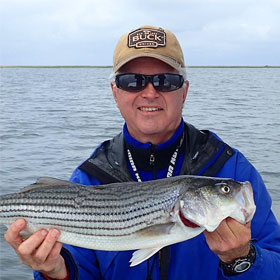What to Know About Old Lures and Vintage Fishing Lures
By Ken Schultz
Nov 11, 2020
Old lures aren’t necessarily vintage fishing lures, and vintage fishing lures aren’t necessarily valuable. Here’s the scoop, plus sources of information
So you found some vintage fishing lures and you’re wondering if they’re worth anything. Or will they still catch fish? Or should you just give them to your neighbor’s kid because he’s taken an interest in fishing?
Loads of people ask if there’s value in antique lures they’ve come across, as well as some not-so-antique-but-nevertheless-old fishing lures. It’s a hard question to answer with certainty, especially if you’re not immersed in the world of vintage fishing lures or other tackle and ephemera. Chances are, they’re not worth much monetarily, but then again...
Old Versus Antique
The way to start is by ascertaining what era or age you’re talking about. Lures made forty to sixty years ago are old, but very few have significant value. They can well be used to catch fish today if you’re so inclined.
There are some exceptions, however. Certain wooden lures that were discontinued by their manufacturers a few decades ago but favored by anglers were hoarded by those in the know and can still fetch a good buck.
The original Big O, a balsa wood crankbait made by Tennessean Fred C. Young in the late 1960s, is one such lure, and it started the crankbaits-for-bass industry. While plastic versions are still made today, signed and numbered wooden Big O originals are legendary and valuable lures that are now in the collectible fishing lures category even though they’re not a century old.
Another example is the large Creek Chub Husky Pikie made by Heddon. A metal-lipped lure, it was especially popular with muskie trollers. Many were dismayed when Heddon started making this lure out of plastic, so the last wooden models were snapped up by anglers to fish with more so than to collect, although they are now viewed as vintage fishing lures.
The definition of vintage goes back further than the mid-20th century, and truly antique lures are those a century or more old, including some of the first wooden and metal lures ever produced in the late 19th and early 20th centuries. Some of these are worth many thousands of dollars, especially if accompanied by the original box they were sold in.
A one-of-a-kind Musky Charmer Minnow was sold in 2018 for $21,000, which is an eye-popping sum until you learn that the most ever paid for old fishing lures was $101,200 for a Riley Haskell Minnow in 2003. Vintage Heddon, Shakespeare, and Pflueger lures are valuable collectibles, but there are many from less well known manufacturers.
A friend of mine, Pat Salimeno, had one of the most valuable vintage fishing lure collections when he passed away over a decade ago. Like most true antique tackle collectors, Pat was astute and wary. He specialized in lures and learned his hobby over decades, finding bargains by doing a lot of pre-Internet legwork. I accompanied him to two eye-opening (for me) sales held by Lang’s Auctions, which is the premier antique fishing tackle auction house, and later sold Pat’s collection. If you sign up with them you can access past auction catalogs and search for previously sold items.
Another source of information is the National Fishing Lure Collectors Club, a nonprofit educational organization which provides member forums and publishes a quarterly magazine. If you become a member you can access their bibliography of educational resources, including antique tackle collecting books. Some such books have become collectible themselves and, though published two or more decades ago, have value for identification purposes if not for valuation of tackle in the current market.









